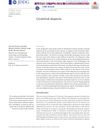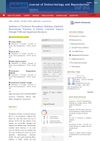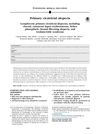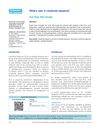Scarring Alopecia: Overview and Treatment Options
June 2012
in “
Actas Dermo-Sifiliográficas
”
scarring alopecia primary cicatricial alopecia PCA hair follicles inflammation autoimmune factors stem cell damage skin biopsy lymphocytic neutrophilic mixed types lichen planus chronic cutaneous lupus erythematosus folliculitis decalvans Brocq pseudopelade corticosteroids antimalarials retinoids immunomodulators Lichen Planopilaris LPP tetracyclines finasteride dissecting folliculitis tufted folliculitis acne keloidalis nuchae acne necrotic varioliformis erosive pustular dermatosis isotretinoin antibiotics surgery laser hair removal Propecia
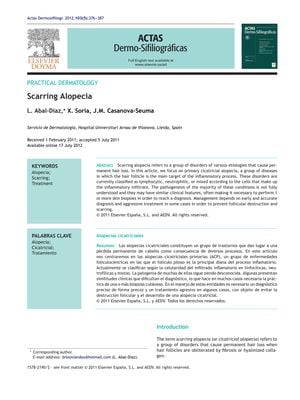
TLDR Early and aggressive treatment of scarring alopecia is important to prevent further hair follicle damage.
The document from June 1, 2012, provides an overview of scarring alopecia, particularly primary cicatricial alopecia (PCA), which is a group of hair loss disorders where hair follicles are irreversibly destroyed by inflammation. PCA, which makes up about 3% of hair loss cases in dermatology, is not fully understood but may involve autoimmune factors and stem cell damage. Symptoms can include itching, burning, and pain, and diagnosis often requires a skin biopsy. Early and aggressive treatment is crucial to prevent further damage. The document also categorizes PCA into lymphocytic, neutrophilic, and mixed types, with common diagnoses being lichen planus, chronic cutaneous lupus erythematosus, folliculitis decalvans, and Brocq pseudopelade. It discusses treatment options such as corticosteroids, antimalarials, retinoids, and immunomodulators. Additionally, it covers Lichen Planopilaris (LPP) and its variants, which are treated with topical or systemic corticosteroids, tetracyclines, and sometimes finasteride. Other forms of scarring alopecia like dissecting folliculitis, tufted folliculitis, acne keloidalis nuchae, acne necrotic varioliformis, and erosive pustular dermatosis are also discussed, with treatments including isotretinoin, antibiotics, surgery, and laser hair removal. Early intervention is emphasized for better outcomes.

